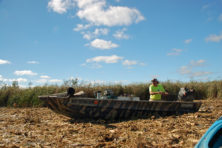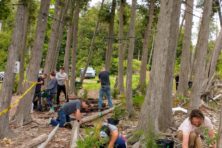Revealing Hidden Treasures: Locating antique furniture and restoring it to its original splendor
- Share
- Tweet
- Pin
- Share

Anyone who has ever watched the public television series Antiques Roadshow knows the thrill and excitement of finding the treasure of a valuable, previously unknown antiquity. As the appraiser evaluates the item, the owner nervously replies to questions about the provenance and history of the piece. By the time the expert finally gives their professional opinion of value, the owner (and the viewer) can barely breathe with anticipation. The moment of truth arrives and the owner learns whether they have an average piece of furniture on their hands or a valuable antique worthy of a place of honor in their home (and perhaps the key element of a potential early retirement nest egg).
Whether from their own garage or found on sale, the thrill of both the hunt and the discovery is what drives many antiques shoppers to keep searching for the one fabulous piece that doesn’t get away. Finding, collecting and restoring antiques is a hobby – for some an obsession – that many Door County residents and visitors enjoy. Need evidence that the peninsula is a popular spot for antiques? One current Door County phone book lists almost 35 antiques retailers in Door and Kewaunee counties.
Many of those shops focus on furniture from a specific period or place. Chelsea Antiques, for example, located just south of Sister Bay on Highway 57, is one of the many antiques shops in the area. They specialize in Victorian and Edwardian furniture and smaller pieces from France and England. Blue Willow, a companion shop, carries Staffordshire Pottery dating from 1820-1920, enamelware from England and France, and other kitchen-related antiques, including cupboards, tables and chairs.
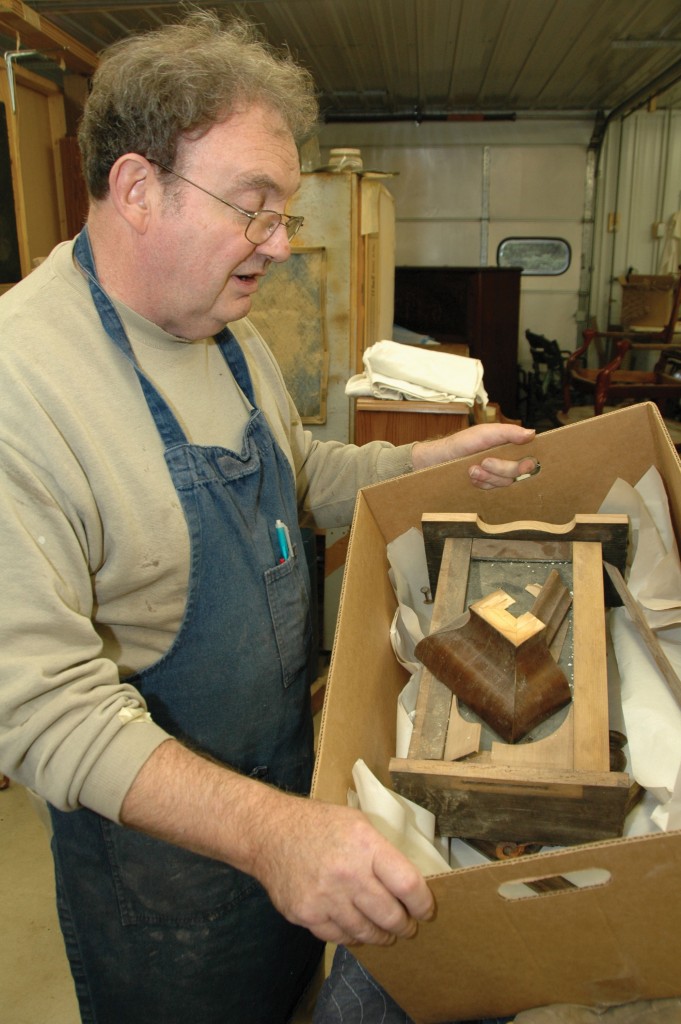
What, exactly, is an antique? Technically, according to the US Government Customs office, an antique is anything over 100 years old. The government makes this definition to control the import and export of antiques. Of course, anything that has value, to you or a potential buyer, could be considered a collectible, whatever its age. (To a 21st century child, will anything that’s not digital be considered antique?)
Rural areas like Door County can provide a wealth of antique goodies for those who are interested in taking the time to look for them. Large farmhouses and storage barns lend themselves to long-hidden treasures, much more so than cramped urban homes and apartments. As it’s been said, nature abhors a vacuum, and those with extra storage space tend to fill it with items deemed no longer useful, rather than simply discard them. Farm or estate auctions are a great source for potential antiques of considerable value. Amid the collections of old farm machinery, old books and other personal artifacts, the informed and inquiring eye can spot a true treasure waiting to be revealed. There are several farm and estate auctions in the area throughout the year.
Every weekend in Door County, the local newspapers list dozens of auctions and garage, yard, rummage or you-name-it sales. Many are the locals and visitors who plan their weekend outings with the classifieds in one hand and a map of the peninsula in the other, plotting their moves from sale to sale, shop to shop and town to town.

Bill Kivell, owner of Swollen Thumb, an antiques restoration shop in Sturgeon Bay, says his customers bring him items from a variety of places and in various states of repair. “People get the pieces from the attic, the barn, garage sales, auctions,” he says. “I’ve had people show up with a bunch of pieces in a box and ask me, ‘What is it and can you put it back together?’”
Kivell has owned Swollen Thumb restoration full time since 1988; his father started the business in 1973. Kivell says that his is a full service facility, but he jokes that he “is not a man of the cloth,” meaning that his services end with wood and don’t include upholstery work.
Using a combination of Old World and modern techniques and products, Swollen Thumb offers repair, refinish, and total or partial restoration for furniture. The oldest piece Kivell says he has worked on was dated 1615. Kivell can also tackle refinishing and restoration of wooden piano cases, with expert partners from outside the area who can repair or replace the instrument’s mechanism.
Of course, learning what is an “antique” versus just something old is a talent that must be acquired and learned. In order to recognize the gem, to separate the wheat from the chaff, to be able to spot the treasure amongst the clutter, you must know what you are looking at in the first place.
The best way to learn is to dive right in, not necessarily with your wallet, but certainly with your eyes, ears and mind wide open. The more you look at, handle and learn about real antiques, the easier it is to distinguish old from new. There are plenty of places and ways for you to learn the luck and art of finding treasures.
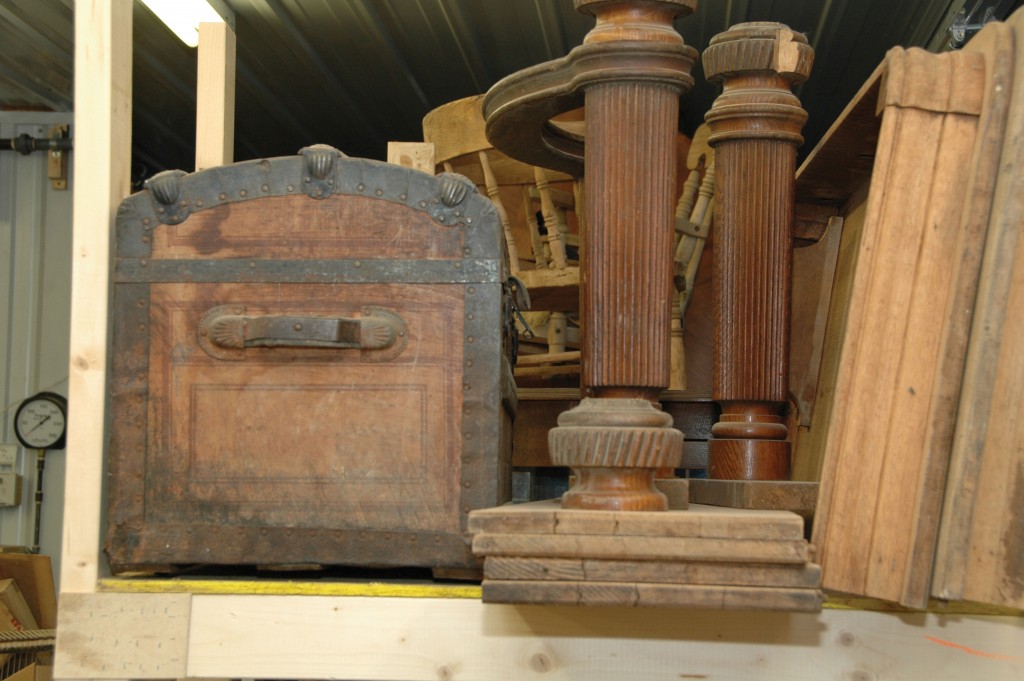
One of the best ways to learn is to get to know a dealer or two. Let them know what you’re interested in (specific periods or types of pieces); there’s no better source than learning from the experts in the field, and Door County, with it’s numerous antiques shops and dealers, has a plethora of experts.
Of his customers, Bill Kivell says about 5 to 10 percent are serious collectors, who are well networked, passionate and possess a keen eye. The rank amateurs make up another 10 percent. That leaves about 80 percent of his customers who know what they have or have a fairly good idea. As for Antiques Roadshow, Kivell says they’re pretty accurate in what they tell their participants. For those wanting to learn more about the world of antique furniture, he confirms that learning from collectors is the way to go.
Once you’ve determined an object to be an antique, restoring it to its original beauty is the next step. Often, the treasure found at a store or sale is covered by years of abuse or neglect. That’s when a restoration project avails itself. For restoration, you can either do it yourself, or call in experts like Kivell.
For the do-it-yourself type, books and on-line resources for restoring antiques are plentiful and useful. Pamela Wiggins, a freelance writer and author of Buying & Selling Antiques and Collectibles on eBay, writes in her on-line column: “It all boils down to doing some research, using your best judgment, and when that’s not enough, [seeking] the advice of a professional before restoring old furnishings.”
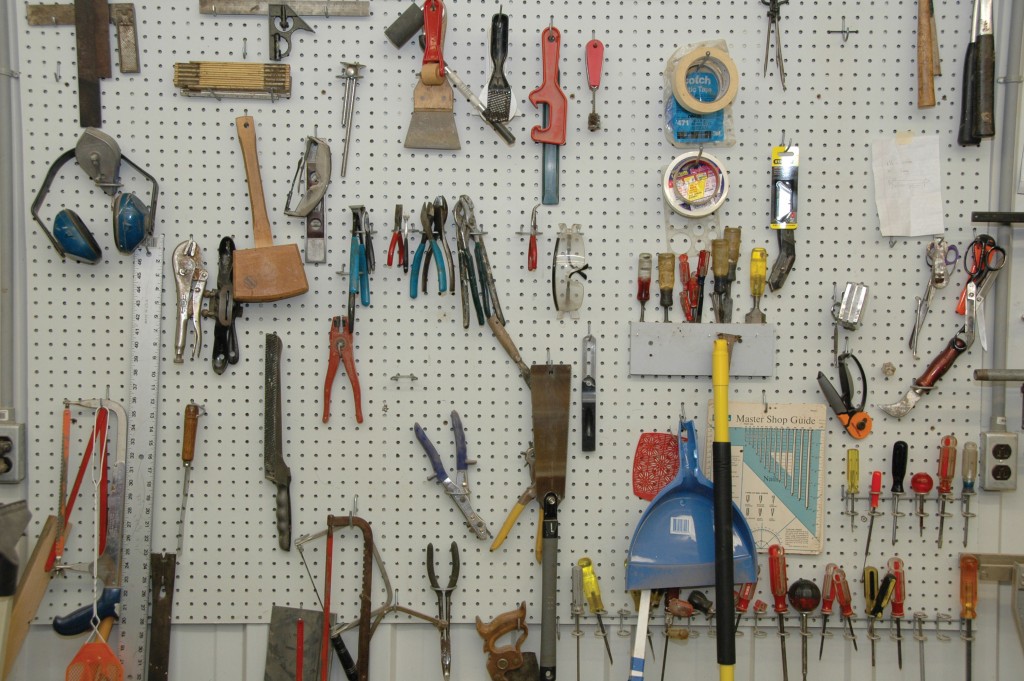
It always helps to define the terms, and the differences between them, when talking about antiques. To “refinish” a piece means to completely remove the existing finish and apply a new one. Kivell says that can mean an entire piece or just a touch-up, to partially refinish a spot on the furniture, especially when removal of the original finish might damage the object. Spot finish repair, for example, can take place when a set of keys nick a table.
To “repair” a piece of furniture means to simply fix whatever minor physical damage might have occurred. In Kivell’s business, that can also mean the repair and manufacture of small parts. More significant repair, say, when your dog takes a chunk out of a chair or there is damage to moldings, can often be done in-home or on-site, but, he warns, only up to a point.
A “restoration” project is one in which the piece, which might have suffered from extreme damage over the years, is brought back to working or presentable condition. Kivell described with pride a recently completed restoration and repair project for a customer on an antique spinning wheel. He encouraged the owner to keep the original finish on the piece, and recommended a simple cleaning of the finish and then protection with wax. He rebuilt the wheel assembly, and restored the piece by manufacturing some parts. Although he claims no knowledge in the art of spinning wool, Kivell believes that the wheel has been restored to perfect working order.
Wiggins and Kivell agree there are some important questions you should ask and steps to take before you plunge into a refinishing or restoration project:
- Is your piece a masterpiece or an example of classic craftsmanship? You want to make sure that refinishing the piece won’t diminish the value of your furniture.
- Look for any marks or labels on the bottom or back of the piece that might indicate that your furniture was made by a notable craftsman or manufacturer, regardless of its age or origin.
- Choose the least invasive method for making a piece of antique furniture usable in your home.
- Focus on restoration rather than revamping whenever possible, especially with valuable pieces of furniture.
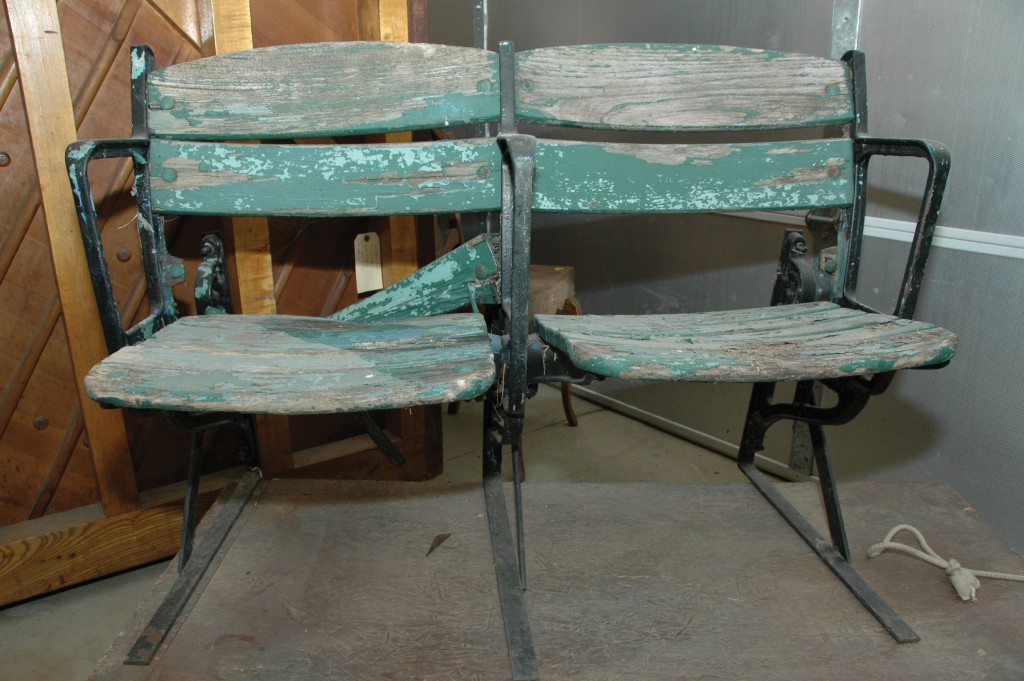
More often than not, less is more when it comes to restoring antiques. Wiggins says, “Unless the piece is an American masterpiece of antique furniture or finished with a hand-painted technique, cleaning and/or restoring the piece may actually do you more good than harm when it comes to value. If that dirty dresser has held together pretty well over time, sometimes a once over cleaning and a little glue to hold the joints together securely will do a world of good. If it turns out that the piece isn’t a rare antique, it’s still better to take the path of least resistance whenever possible. And you can actually bring a piece of old furniture back to life with minimal effort in many cases.”
Bill Kivell agrees. He says that “nine times out of ten you enhance a piece with repair and/or restoration,” rather than refinishing.
Ultimately, though, the decision on when to restore a piece of furniture is always up to the owner. No matter what the age, value or provenance of a piece, it holds a place of importance in the eye of the owner. “Each piece is a customer’s treasure and should be treated that way,” says Kivell.

